文章
Joss
2017年02月18日


If you are gardening on a budget, have we got the plant for you! How can a plant choice help you spend less and garden more? Well if you grow Butterfly Bush, (Buddleia) its easy… here’s why.
Butterfly Bush is one of the easiest shrubs to grow. It is low maintenance, requiring little in the way of fertilizer, and is resistant to pests and disease. So you spend less on upkeep. Say that about a rose bush! The gray green leaves are the perfect backdrop for any garden, and they have a fine texture and arching shape that many gardens lack.
It grows fast. And we mean FAST.
Butterfly Bush will fill a corner, create a hedge or become the background of a large planting bed in one season. It grows 5-10 feet high and as wide, so it can make fast impact on your yard for little cash. Don’t bother with the $40 ten gallon size from the nursery. Buy them in four inch pots for $3, wait one season and have full size bushes!
It attracts, of all things, butterflies!
And occasionally hummingbirds, and the finches love to hang out there too. Forget a butterfly feeder, plant this shrub.
It has beautiful flowers perfect for cutting, and lots of them all summer long.
Butterfly Bush produces panicles of pretty flowers that range from a few inches to over a foot long depending on variety. The most common colors are pink and purple, but there are also blue, white and a yellow variety. The yellow happens to be fragrant as well, although the flower panicles are smaller. These all make great cut flowers on long stems, and bloom from June to September.
Drought Resistant means it saves water (and money!) too!

Butterfly Bush Growing Basics
Butterfly Bush will grow in poor soil, although prefers a mid range loam. Do not fertilize much as that will produce too much green growth, and make it lanky with few flowers.
Give them room…ten feet across is not uncommon.
Water well the first year to develop a good root system, and they are moderately drought resistant after that.
Cut back to 12-18 inches from the ground in early spring. That may sound severe, but this will create a more dense uniform plant with larger flowers. Trust us, it will rebound to its large size by June. This is the secret to attractive shrubs that make your garden look like a prize winning spot!
Don’t be in a hurry in the spring to see new growth, as Butterfly Bush is a late sleeper. It will put out new leaves a little later than a lot of other shrubs, so be patient, it catches up fast.
They do well down to Zone 5, and can be semi evergreen in areas that do not freeze. They are deciduous in colder areas, but since you cut it back to the ground in early spring anyway, it doesn’t matter.
Be aware, some varieties can be invasive. If you have that problem in your area, look for “sterile” varieties that do not self seed.
Our Fav Varieties!
Tried and True, “Pink Delight” is still the industry standard, with uniform growth and large, deep pink flowers. Other pink varieties we love” “Miss Molly” and “Royal Red”.
If you love fragrance, try “Honeycomb”. Yellow flowers and a delicious scent.
A dwarf variety that is suitable for large containers is “Blue Chip” This is also a sterile variety.
“Purple Emperor” is a fantastic deep purple with long panicles of flowers, and for a sparkling white variety, try “White Ball” or “White Profusion”
There are dozens of varieties from local and online nurseries, even selections with variegated foliage!
If you garden on a budget, Butterfly Bush is a proven winner that will quickly establish an attractive, full garden for little money, and basic upkeep. Already have it growing in your garden? Whats your experience with it?
3
0
文章
Eyin Thor
2017年02月16日

Want to keep your plants healthy and productive? Here’re the 5 essential ways to do this. Learn more!
One of the most satisfying things to do is to have a healthy and productive garden. In fact, gardening has a lot of benefits. Greenery can keep away negative vibes that ruin your mood.
1. Right soil is what you need
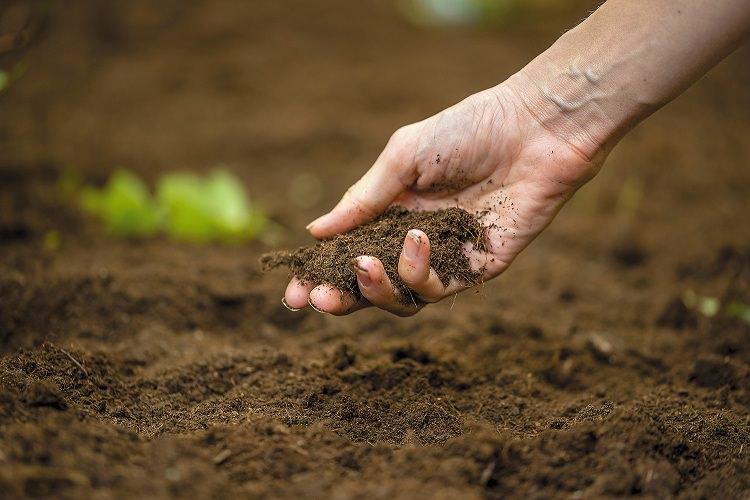
Obviously, you can’t have plants growing healthy and productive if you don’t have right soil. Right? It means, your soil should be fertile, permeable, loamy, and right pH. As good and healthy soil helps build up a strong, productive plant. Also, think again if you want to use chemicals for soil treatments– To have the best and desirable result, better go for organic soil.
2. Choosing the right plants is important
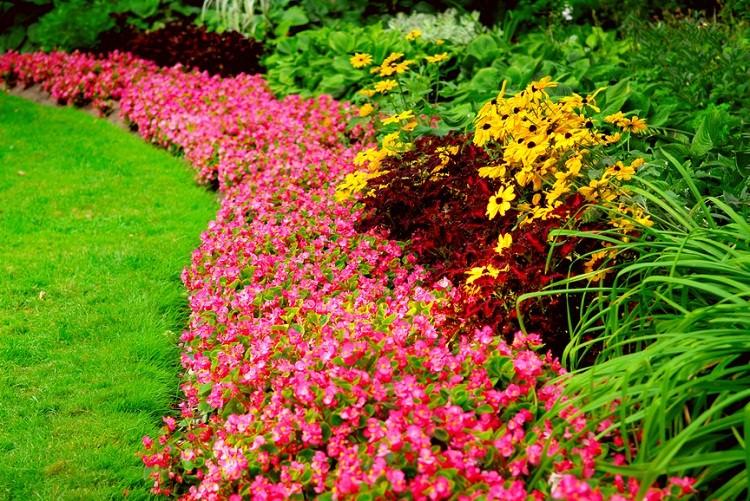
Just because you like a particular plant that doesn’t mean you can also have it growing successfully. You have to choose plants that not only look attractive but also match with the planting conditions you have. Choose plants that will adjust well to any spot in terms of the light, moisture, drainage, soil quality, and dimensions. Also, choose plants that are more resistant pests and diseases to ensure they will grow healthier day by day.
3. Proper spacing is must
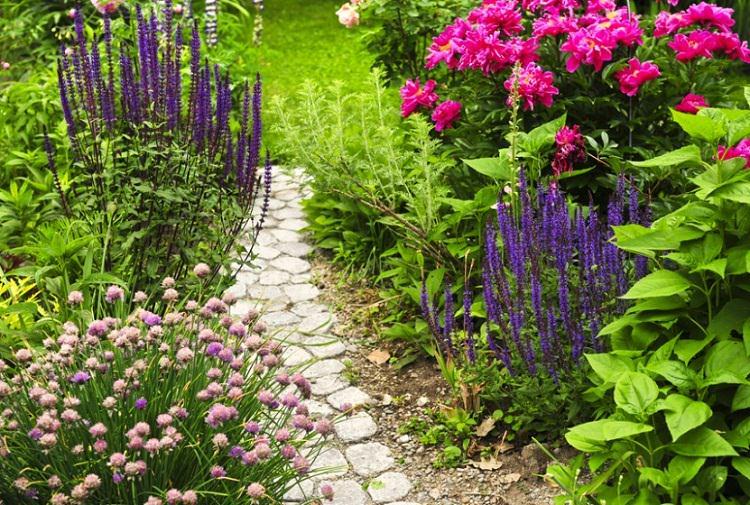
Proper planting space is essential. No doubt it is one of the biggest factors that contributes to the health of the plants. Each plant has its own spacing needs but a few tips like providing proper air circulation around the plants or choosing a large pot (for container gardening) must be considered. Groundcovers and low growing plants should be grouped tightly in beds you don’t walk on. Grouping the plants rightly will also help in reducing the need for weeding and the wastage of water. Moreover, it leads to easier path maintenance. Of course, since plants also need air circulation, you should have ample space between them and the rows. It will also contribute to repel fungal attacks. However, if you have limited space and time, and want the highest returns of your fresh organic plants, you ought to consider planting indeterminate tomatoes, non-hybrid (old) pole beans, and Zucchini in containers.
4. Proper watering must be done
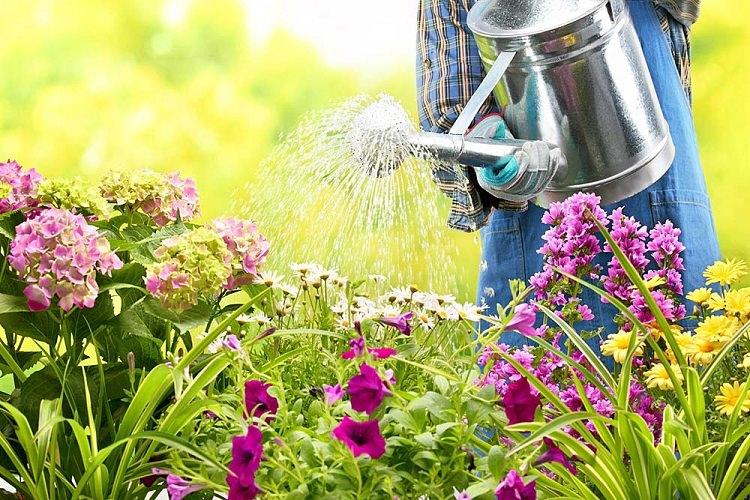
The right watering is one of the most important things you should consider. Just because you have to water the plants it doesn’t mean you’ll have to wet them. Different plants have different watering needs but there is a common approach– Never overwater or underwater your plants. Also, you should know about the right watering time– the best time to water plants is usually in the mornings, since it is the time when the day is cool and without strong winds. So the amount of water lost to evaporation is reduced. But if you water the plants in the evening, it might stay damp overnight, making them more likely to be damaged by fungal and bacterial diseases. Most experts recommend a substantial, infrequent watering for established plants. It is to ensure that the plants will grow in the right way.
5. Planting position is the key
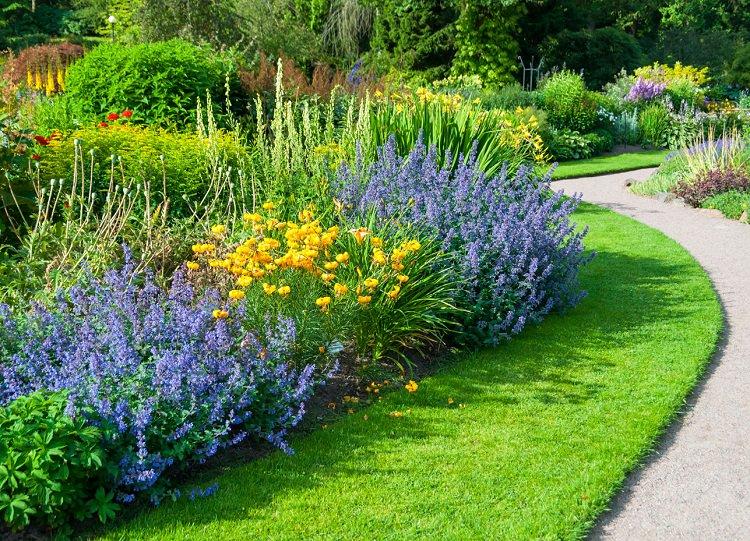
For the best-growing plants, it is important that you care about the planting position. Choose the space with proper sunlight. However, don’t forget about the fact that are the plants too that thrive in shade. Also, the planting position must be well-draining. If you’re growing plants in containers, care about there are sufficient drainage holes in the bottom of the pots.
Whether you realize it or not, gardening is an investment and it brings a significant impact in life!
John has great passion in writing and he writes on various topics. His engaging photos and well-written travel experiences are such a refreshing change from the other blogs in the related field.
One of the most satisfying things to do is to have a healthy and productive garden. In fact, gardening has a lot of benefits. Greenery can keep away negative vibes that ruin your mood.
1. Right soil is what you need

Obviously, you can’t have plants growing healthy and productive if you don’t have right soil. Right? It means, your soil should be fertile, permeable, loamy, and right pH. As good and healthy soil helps build up a strong, productive plant. Also, think again if you want to use chemicals for soil treatments– To have the best and desirable result, better go for organic soil.
2. Choosing the right plants is important

Just because you like a particular plant that doesn’t mean you can also have it growing successfully. You have to choose plants that not only look attractive but also match with the planting conditions you have. Choose plants that will adjust well to any spot in terms of the light, moisture, drainage, soil quality, and dimensions. Also, choose plants that are more resistant pests and diseases to ensure they will grow healthier day by day.
3. Proper spacing is must

Proper planting space is essential. No doubt it is one of the biggest factors that contributes to the health of the plants. Each plant has its own spacing needs but a few tips like providing proper air circulation around the plants or choosing a large pot (for container gardening) must be considered. Groundcovers and low growing plants should be grouped tightly in beds you don’t walk on. Grouping the plants rightly will also help in reducing the need for weeding and the wastage of water. Moreover, it leads to easier path maintenance. Of course, since plants also need air circulation, you should have ample space between them and the rows. It will also contribute to repel fungal attacks. However, if you have limited space and time, and want the highest returns of your fresh organic plants, you ought to consider planting indeterminate tomatoes, non-hybrid (old) pole beans, and Zucchini in containers.
4. Proper watering must be done

The right watering is one of the most important things you should consider. Just because you have to water the plants it doesn’t mean you’ll have to wet them. Different plants have different watering needs but there is a common approach– Never overwater or underwater your plants. Also, you should know about the right watering time– the best time to water plants is usually in the mornings, since it is the time when the day is cool and without strong winds. So the amount of water lost to evaporation is reduced. But if you water the plants in the evening, it might stay damp overnight, making them more likely to be damaged by fungal and bacterial diseases. Most experts recommend a substantial, infrequent watering for established plants. It is to ensure that the plants will grow in the right way.
5. Planting position is the key

For the best-growing plants, it is important that you care about the planting position. Choose the space with proper sunlight. However, don’t forget about the fact that are the plants too that thrive in shade. Also, the planting position must be well-draining. If you’re growing plants in containers, care about there are sufficient drainage holes in the bottom of the pots.
Whether you realize it or not, gardening is an investment and it brings a significant impact in life!
John has great passion in writing and he writes on various topics. His engaging photos and well-written travel experiences are such a refreshing change from the other blogs in the related field.
0
0
文章
Hande Salcan
2017年02月16日

Once July and August roll around in the garden, it’s really common for the “bloom to come off the rose” so to speak. In other words, our gardens can get a little bedraggled, and our gardening inspiration can get a little tired… Here are some great tips for your tired summer garden to freshen the look, and brighten your gardening spirit as well!

It’s Time for a New Do
Midsummer many plants have already bloomed, and tend to get a little lanky with the hot days. Almost every flower and herb can use a good haircut right about now. Spring and early summer bloomers can be cut back to one third their height. Fall bloomer, just cut a couple inches off the tops to help them grow more compactly and set more buds for fall blooming. If your plants are in bloom right now, take a pair of clippers and trim off the dead and dying blooms. This is called “deadheading” and will force the plant into setting more flowers, not setting seed. Give your plants a good deep watering with a liquid fertilizer and wait for more blooms and refreshes foliage in a couple of weeks!
Green it Up!
Lawns need another dose of fertilizer in July. Pick a cool evening and consider using an organic fertilizer. They build the soil and create a healthier lawn long term. Not to mention, they are better for the environment and not harmful to kids and pets.

Go Surfing
Online that is. You need an inspirational project to remind you of the connection you have with the living things in your garden. Pinterest is the place to find great ideas. Even if you never get one of the projects done, the time spent looking at photos of beautiful outdoor spaces will help you feel inspired to spend more time in yours.
Beat the Heat
If it’s too hot outside to be in the garden like you were in the spring, don’t use that as an excuse. Schedule time for yourself to have breakfast or tea in the garden earlier in the day, or build a fire pit and plant fragrant containers to enjoy it at night.
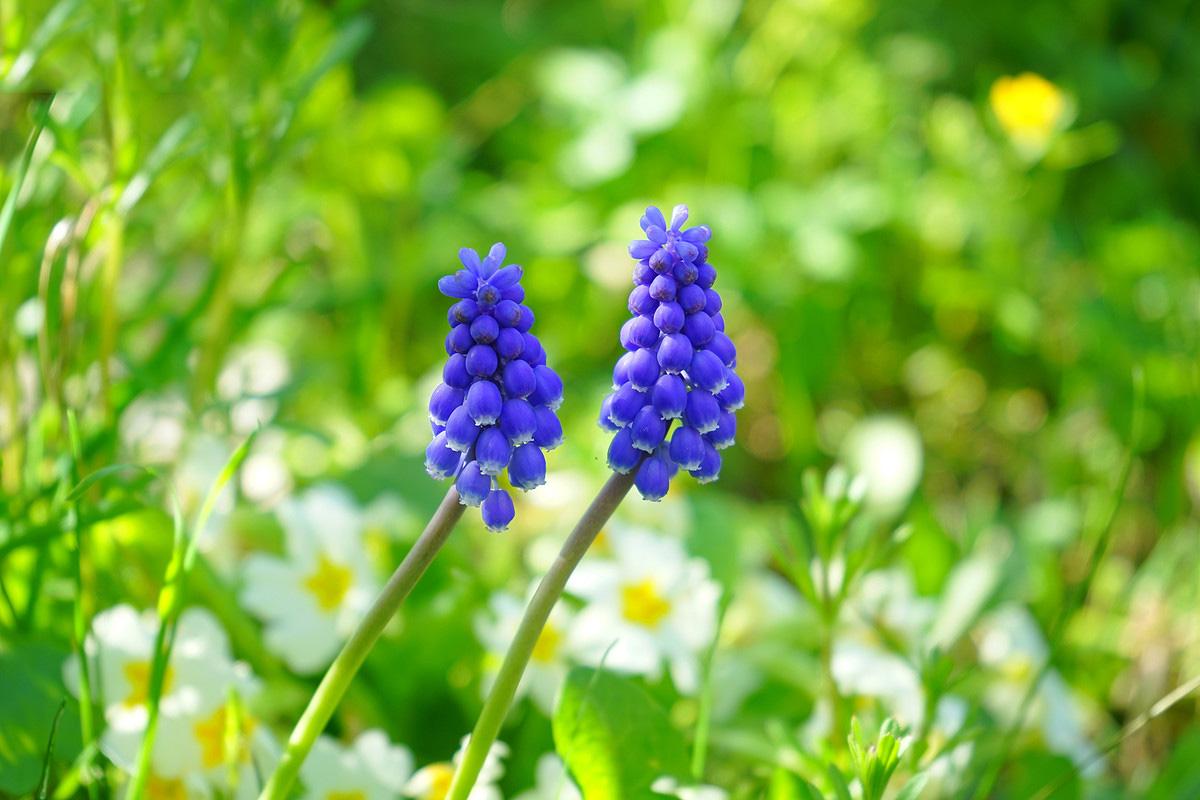
Color your World
Many flowering perennial plants are in a down cycle in midsummer, so pick up some inexpensive blooming annuals and pot them up for a quick and bright pop in focal areas of your garden. Check out your local nursery for what works best in your area, but Verbena is one of my favs… takes the heat and blooms like crazy! If you have planters with spring blooming pansies that have seen better days, switch them out for new annuals better equipped to take the heat.
So don’t let the midsummer gardening blues hit you or your garden. Use these tips to revitalize your summer garden and keep you inspired. Fall is right around the corner, and what a beautiful time in the outdoors!

It’s Time for a New Do
Midsummer many plants have already bloomed, and tend to get a little lanky with the hot days. Almost every flower and herb can use a good haircut right about now. Spring and early summer bloomers can be cut back to one third their height. Fall bloomer, just cut a couple inches off the tops to help them grow more compactly and set more buds for fall blooming. If your plants are in bloom right now, take a pair of clippers and trim off the dead and dying blooms. This is called “deadheading” and will force the plant into setting more flowers, not setting seed. Give your plants a good deep watering with a liquid fertilizer and wait for more blooms and refreshes foliage in a couple of weeks!
Green it Up!
Lawns need another dose of fertilizer in July. Pick a cool evening and consider using an organic fertilizer. They build the soil and create a healthier lawn long term. Not to mention, they are better for the environment and not harmful to kids and pets.

Go Surfing
Online that is. You need an inspirational project to remind you of the connection you have with the living things in your garden. Pinterest is the place to find great ideas. Even if you never get one of the projects done, the time spent looking at photos of beautiful outdoor spaces will help you feel inspired to spend more time in yours.
Beat the Heat
If it’s too hot outside to be in the garden like you were in the spring, don’t use that as an excuse. Schedule time for yourself to have breakfast or tea in the garden earlier in the day, or build a fire pit and plant fragrant containers to enjoy it at night.

Color your World
Many flowering perennial plants are in a down cycle in midsummer, so pick up some inexpensive blooming annuals and pot them up for a quick and bright pop in focal areas of your garden. Check out your local nursery for what works best in your area, but Verbena is one of my favs… takes the heat and blooms like crazy! If you have planters with spring blooming pansies that have seen better days, switch them out for new annuals better equipped to take the heat.
So don’t let the midsummer gardening blues hit you or your garden. Use these tips to revitalize your summer garden and keep you inspired. Fall is right around the corner, and what a beautiful time in the outdoors!
1
0
文章
Gina
2017年02月15日

When gardening in a small space, one of the largest budget busters is purchasing containers for your plantings. Even at the discount stores, buying containers for your garden can take a huge chunk out of your wallet, leaving nothing for the plants! There are ways to creatively create your own containers and save money on gardening in a small space.
Remake a Cheap Container
When you look at the reality of it, all a container has to do is hold soil and allow water to drain. Looking pretty isn’t necessary for function, but most of us want to dress up our yards with our gardens.
Here’s some ideas:
Cheap pots from the dollar store, kitty litter buckets, or plastic paint buckets
Spray paint made for plastics
Glue gun
Decorative pebbles or stone
If your container has no way for water to drain, drill a few holes in the bottom. If you don’t have access to a drill, use a hammer and nail.
Make sure you clean your container well, then follow the paint can directions for giving your container an attractive base color. Earth or natural tones are best to keep the container looking unobtrusive. Metal finishes are also an option, you may want to try one of the newer hammered metal finishes for a modern look. Allow to dry overnight.
Using your glue gun, attach your stones or pebbles in a decorative fashion. I like to lay the planter on its side and work around the pot using bands of stones to “paint” simple designs. Lines, waves, geometric shapes and banding effects are all easy enough for any beginner. Try to plan your design to hide the less attractive areas of the container, especially if you’re using something recycled.
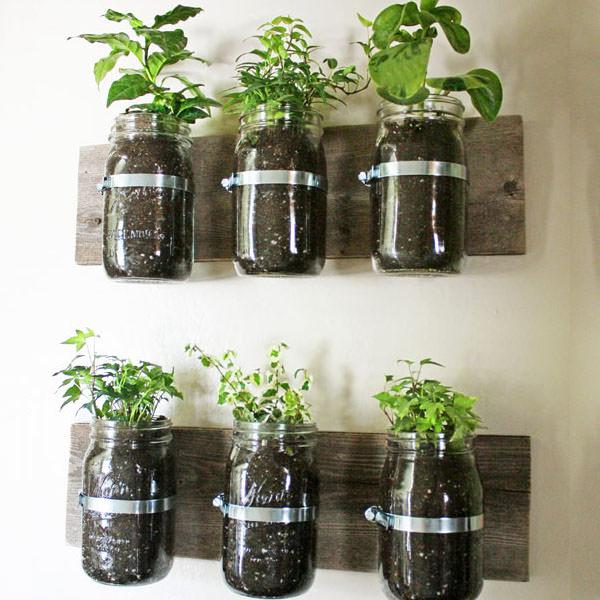
Allow the glue to set 24 hours. If the containers will not be in a protected area such as a porch or deck, you might want to consider using an exterior grade glue instead.
Fill with soil, plant, enjoy!
Using Unusual Containers
If cheap garden containers are what you need, yard sale season is the perfect time to find them! Since we already know that all garden containers need to do is hold soil and provide drainage, this is a perfect way to make charming container gardens on a budget.
Scour yard sales, thrift shops and your own home for unique garden container ideas. Miniature gardens can be created and displayed inside everything from pretty teapots with a chipped rim to old suitcases or even purses! Wooden tool boxes, hanging colanders, mason jars and even old canoes!
Want something with a modern flair? Check out a pipe supply company for lengths of metal drainage pipe that can be used as trendy, urban looking containers.
Attach lengths of chain to old light fixtures to make funky hanging containers. Use your imagination… and it doesn’t hurt to say it again. If it can hold soil, it can be a container!
That having been said, make sure to use items within the style and theme of your home and gardens. Planting old work boots with trailing sedums would look great near an old barn in a country garden, but its going to look all wrong on the porch of a contemporary home.

Tips and Tricks
When using cheap or free containers in your garden, there are a couple of tips to help keep your garden looking less than “cheap”.
Use a common element to keep things pulled together. Use the same color family, same style of decorating the pots, or use an unusual shape for the pots to make it all look deliberate. You don’t want it to look like a hodgepodge.
Use trailing plants with abandon. Letting plants fall over the side of the pots moves them into the background, hides imperfections in your containers, and puts the focus on the plants which is where it belongs.
Bring the eye up. Plant some tall, dramatic plants in pots to keep the eye from examining the containers too closely. Cleome, hollyhocks, and cosmos are tall plants that can easily (and quickly) be grown from seed, saving money.
When planning small space gardens, making cheap containers can help you save money, while adding color and flexibility to your special outdoor space.
Remake a Cheap Container
When you look at the reality of it, all a container has to do is hold soil and allow water to drain. Looking pretty isn’t necessary for function, but most of us want to dress up our yards with our gardens.
Here’s some ideas:
Cheap pots from the dollar store, kitty litter buckets, or plastic paint buckets
Spray paint made for plastics
Glue gun
Decorative pebbles or stone
If your container has no way for water to drain, drill a few holes in the bottom. If you don’t have access to a drill, use a hammer and nail.
Make sure you clean your container well, then follow the paint can directions for giving your container an attractive base color. Earth or natural tones are best to keep the container looking unobtrusive. Metal finishes are also an option, you may want to try one of the newer hammered metal finishes for a modern look. Allow to dry overnight.
Using your glue gun, attach your stones or pebbles in a decorative fashion. I like to lay the planter on its side and work around the pot using bands of stones to “paint” simple designs. Lines, waves, geometric shapes and banding effects are all easy enough for any beginner. Try to plan your design to hide the less attractive areas of the container, especially if you’re using something recycled.

Allow the glue to set 24 hours. If the containers will not be in a protected area such as a porch or deck, you might want to consider using an exterior grade glue instead.
Fill with soil, plant, enjoy!
Using Unusual Containers
If cheap garden containers are what you need, yard sale season is the perfect time to find them! Since we already know that all garden containers need to do is hold soil and provide drainage, this is a perfect way to make charming container gardens on a budget.
Scour yard sales, thrift shops and your own home for unique garden container ideas. Miniature gardens can be created and displayed inside everything from pretty teapots with a chipped rim to old suitcases or even purses! Wooden tool boxes, hanging colanders, mason jars and even old canoes!
Want something with a modern flair? Check out a pipe supply company for lengths of metal drainage pipe that can be used as trendy, urban looking containers.
Attach lengths of chain to old light fixtures to make funky hanging containers. Use your imagination… and it doesn’t hurt to say it again. If it can hold soil, it can be a container!
That having been said, make sure to use items within the style and theme of your home and gardens. Planting old work boots with trailing sedums would look great near an old barn in a country garden, but its going to look all wrong on the porch of a contemporary home.

Tips and Tricks
When using cheap or free containers in your garden, there are a couple of tips to help keep your garden looking less than “cheap”.
Use a common element to keep things pulled together. Use the same color family, same style of decorating the pots, or use an unusual shape for the pots to make it all look deliberate. You don’t want it to look like a hodgepodge.
Use trailing plants with abandon. Letting plants fall over the side of the pots moves them into the background, hides imperfections in your containers, and puts the focus on the plants which is where it belongs.
Bring the eye up. Plant some tall, dramatic plants in pots to keep the eye from examining the containers too closely. Cleome, hollyhocks, and cosmos are tall plants that can easily (and quickly) be grown from seed, saving money.
When planning small space gardens, making cheap containers can help you save money, while adding color and flexibility to your special outdoor space.
3
0
文章
Andy
2017年02月15日

Start apartment gardening if you live in a city and don’t have space for a regular garden with these 7 apartment herb garden tips.
We all try to be as healthy and natural as possible. We go to grocery stores, organic markets and spend money on superfoods. We purify our drinking water, pay attention to our body and try occasionally to enjoy nature to come out of our hectic schedules. A herb garden fits perfectly into this picture. Your home-grown herbs and perhaps vegetables too. Who does not want that? Freshest and tastiest. But of course, there is still a practical side to this story. How to create a herb garden? Did you have space for a garden in your urban house?
Maybe not, but you can create a small garden anywhere. In your apartment balcony, on a small terrace, patio or on a rooftop you can create a herb garden.
Apartment Herb Garden Tips
1. Choose herbs that you like and use most

Gardening with herbs is easiest. A good start is half the work. Carefully think about what you want exactly. A herb garden (or any kind of garden) takes time, money and energy so it’s good to know what you need before you start.
Do you eat a lot of basil, parsley, cilantro or even thyme or rosemary? If you’re not so sure what you’re using exactly and frequently wait for a couple of weeks and keep a small diary or save your observation in a message or email draft and see what often gets into your food, which herb is essential in your food culture and which one you would like to try. Once you get the answers, go ahead to buy herbs for a herb garden or start them from seeds.
2. Evaluate well the available space

Next, it is important that you choose a good place for your herb garden. That is of course entirely dependent on the available space. In a limited space like a windowsill you should probably do this with a few pots. It would be better if you have a balcony or roof terrace, you are all set and if you have a garden, the possibilities are quite endless. What you should think, especially if you need to work in a small space, is that how much sunlight you get there.
3. Go vertical to create space

Go vertical to create space. Use walls, railings and ceiling to hang planters. If you think smartly you can increase your space up to 3-4 times this way. You can hang shelves too where you can put small pots. Another attractive solution to make a pallet shelve or use a shoe rack. If you’re growing herbs indoors buying a herb garden set is also a good idea.
4. Grow more than just herbs

If there is space left grow more than just herbs. Beautiful annual flowers, foliage plants or long-lasting perennials. A lemon tree or a dwarf fruit tree. The possibilities are endless. You can also start to grow your ow vegetables.
5. Provide shade in the hottest months

Plants love sunlight. But as with everything in moderation is very important. If your place receives day long excessive sunshine provides a little afternoon shade, especially in warm climates. Too much sun can dry the herbs and die, herbs like cilantro bolts in warm temperature in the scorching sun.
6. Create a nice seating area in your herb garden

Your herb garden will also look very nice and the fragrance of aromatic herbs will make it a wonderful place to sit in. If you have grown some flowers and shrubs you can enjoy it more. So it’s a good idea to create a nice place to sit.
Also Read: How to Make a Balcony Herb Garden
7. Get enough place to store herbs

With these apartment herb garden tips and some dedication, the time will come when the herbs are ready to be picked. You can pick off fresh fragrant leaves to garnish on your dishes or you can store some for later use. Of course, it depends entirely on how much you have sown this will decide how much you will have to reap. It is nice to keep the dried herbs in the kitchen so that you can use them during cooking conveniently.
We all try to be as healthy and natural as possible. We go to grocery stores, organic markets and spend money on superfoods. We purify our drinking water, pay attention to our body and try occasionally to enjoy nature to come out of our hectic schedules. A herb garden fits perfectly into this picture. Your home-grown herbs and perhaps vegetables too. Who does not want that? Freshest and tastiest. But of course, there is still a practical side to this story. How to create a herb garden? Did you have space for a garden in your urban house?
Maybe not, but you can create a small garden anywhere. In your apartment balcony, on a small terrace, patio or on a rooftop you can create a herb garden.
Apartment Herb Garden Tips
1. Choose herbs that you like and use most

Gardening with herbs is easiest. A good start is half the work. Carefully think about what you want exactly. A herb garden (or any kind of garden) takes time, money and energy so it’s good to know what you need before you start.
Do you eat a lot of basil, parsley, cilantro or even thyme or rosemary? If you’re not so sure what you’re using exactly and frequently wait for a couple of weeks and keep a small diary or save your observation in a message or email draft and see what often gets into your food, which herb is essential in your food culture and which one you would like to try. Once you get the answers, go ahead to buy herbs for a herb garden or start them from seeds.
2. Evaluate well the available space

Next, it is important that you choose a good place for your herb garden. That is of course entirely dependent on the available space. In a limited space like a windowsill you should probably do this with a few pots. It would be better if you have a balcony or roof terrace, you are all set and if you have a garden, the possibilities are quite endless. What you should think, especially if you need to work in a small space, is that how much sunlight you get there.
3. Go vertical to create space

Go vertical to create space. Use walls, railings and ceiling to hang planters. If you think smartly you can increase your space up to 3-4 times this way. You can hang shelves too where you can put small pots. Another attractive solution to make a pallet shelve or use a shoe rack. If you’re growing herbs indoors buying a herb garden set is also a good idea.
4. Grow more than just herbs

If there is space left grow more than just herbs. Beautiful annual flowers, foliage plants or long-lasting perennials. A lemon tree or a dwarf fruit tree. The possibilities are endless. You can also start to grow your ow vegetables.
5. Provide shade in the hottest months

Plants love sunlight. But as with everything in moderation is very important. If your place receives day long excessive sunshine provides a little afternoon shade, especially in warm climates. Too much sun can dry the herbs and die, herbs like cilantro bolts in warm temperature in the scorching sun.
6. Create a nice seating area in your herb garden

Your herb garden will also look very nice and the fragrance of aromatic herbs will make it a wonderful place to sit in. If you have grown some flowers and shrubs you can enjoy it more. So it’s a good idea to create a nice place to sit.
Also Read: How to Make a Balcony Herb Garden
7. Get enough place to store herbs

With these apartment herb garden tips and some dedication, the time will come when the herbs are ready to be picked. You can pick off fresh fragrant leaves to garnish on your dishes or you can store some for later use. Of course, it depends entirely on how much you have sown this will decide how much you will have to reap. It is nice to keep the dried herbs in the kitchen so that you can use them during cooking conveniently.
1
0
文章
Andy
2017年02月15日

If you’re new to gardening and planning to grow herbs then check out these 13 easy to grow herbs. All of them are low maintenance.
Also Read: How to Make Spiral Herb Garden
Easy to Grow Herbs for a Herb Garden
1. Parsley

Parsley is a biennial herbaceous plant, although it can also be grown as an annual. It is propagated from seeds easily, place it in a sunny or shady it doesn’t mind, parsley is not picky about soil type too. However, choose soil that is not too compact. It is one of the most easy to grow herbs for containers.
2. Mint

Mint is a very aromatic, perennial herb that can be grown in pots or in garden soil.
It needs plenty of water and supply of mineral fertilizers or natural organic fertilizers to spread heavily. It grows better in partial shade. You can easily get new plants from its cuttings or by dividing the root ball.
3. Rosemary

Use it fresh or dried, rosemary is a boon to have in a kitchen garden. Growing rosemary from seeds is slightly difficult as it takes time, quicker way is to buy a potted rosemary plant and multiply it from cuttings.
4. Lavender

You can grow lavender in a variety of climates. Suitable for cool temperate or Mediterranean climates you can also grow this most beautiful herb in subtropical regions.
If you want to multiply it, do it by cuttings of 10 cm. in size in summer.
Also Read: How to Grow Lavender in Tropics
5. Thyme

An easy to grow and less demanding herb, it adapts to all types of soils and is highly resistant to drought. You only need to provide it the sun. After four or five years this low growing plant loses some of its perfume and you may need to replace the old plants. *Grow it as annual in tropics.
6. Chamomile

It likes full sun, with well-drained and permeable soil. It is resistant to drought and once bloomed in the spring, you should cut it to regain its strength. If you collect the flowers, you must do this in its fullness, dry flowers in shade to avoid the exposure to direct sunlight to avoid spoilage.
7. Sage

One of the toughest herbs that prefer full sun situations, especially if you live in a cool climate, always plant sage in a warm place. Sage can be grown in a variety of soil types, well draining and permeable soil with little organic matter is recommended. In subtropical or tropical climatic zones, grow sage in a slightly clayey soil in pots and provide shade in the afternoon. *Overwatering must be avoided.
8. Oregano

This pungent herb is most favorite of many. It is known for centuries throughout the Mediterranean and West Asia, where it grows freely. Growing oregano is not difficult, grow it from seeds, cuttings or buy a few potted plants for your garden in the spring. To ensure the quality, remove 3-4 years old plant and grow new ones.
9. Lemon Verbena

Being a subtropical herb lemon verbena needs a warm environment to thrive. Grow the plant in direct sun. In cooler zones, growing lemon verbena in pots is a better idea to protect it from frost.
10. Rue

Basically, an ornamental medicinal herb but it is also used in recipes though sparingly. It is not much popular but growing this pungent herb is a great way to repel insects from your garden. It grows in USDA Zones 4-9 and requires the sun or partial shade and protection from the wind. It prefers poor and calcareous soils.
11. Basil

Basil must be planted in full sun (6 hours minimum) in a well-drained and moist soil. Pick leaves to encourage the growth and when the plant is young pick the tips for thick bushier shape.
12. Curry Tree

Grow the pungent curry tree plant if you want to enjoy more flavor in your South East Asian delicacies and Indian curries. However, the curry tree does not tolerate frost but it is exceptionally a low maintenance, drought resistant tropical herb. You can grow it in a pot and protect it in winters, it’s easy.
Also Read: How to Grow Curry Tree
13. Bay Leaf Tree

One more small to medium sized tree in our list that is easy to grow. Grow bay leaf tree to add flavor to your soups and stews. This plant may not be hardy to cooler zones below 8 and requires protection in winter. The best way to overwinter this Mediterranean herb is to keep it indoors.
Learn how to grow laurel bay leaf tree
Also Read: How to Make Spiral Herb Garden
Easy to Grow Herbs for a Herb Garden
1. Parsley

Parsley is a biennial herbaceous plant, although it can also be grown as an annual. It is propagated from seeds easily, place it in a sunny or shady it doesn’t mind, parsley is not picky about soil type too. However, choose soil that is not too compact. It is one of the most easy to grow herbs for containers.
2. Mint

Mint is a very aromatic, perennial herb that can be grown in pots or in garden soil.
It needs plenty of water and supply of mineral fertilizers or natural organic fertilizers to spread heavily. It grows better in partial shade. You can easily get new plants from its cuttings or by dividing the root ball.
3. Rosemary

Use it fresh or dried, rosemary is a boon to have in a kitchen garden. Growing rosemary from seeds is slightly difficult as it takes time, quicker way is to buy a potted rosemary plant and multiply it from cuttings.
4. Lavender

You can grow lavender in a variety of climates. Suitable for cool temperate or Mediterranean climates you can also grow this most beautiful herb in subtropical regions.
If you want to multiply it, do it by cuttings of 10 cm. in size in summer.
Also Read: How to Grow Lavender in Tropics
5. Thyme

An easy to grow and less demanding herb, it adapts to all types of soils and is highly resistant to drought. You only need to provide it the sun. After four or five years this low growing plant loses some of its perfume and you may need to replace the old plants. *Grow it as annual in tropics.
6. Chamomile

It likes full sun, with well-drained and permeable soil. It is resistant to drought and once bloomed in the spring, you should cut it to regain its strength. If you collect the flowers, you must do this in its fullness, dry flowers in shade to avoid the exposure to direct sunlight to avoid spoilage.
7. Sage

One of the toughest herbs that prefer full sun situations, especially if you live in a cool climate, always plant sage in a warm place. Sage can be grown in a variety of soil types, well draining and permeable soil with little organic matter is recommended. In subtropical or tropical climatic zones, grow sage in a slightly clayey soil in pots and provide shade in the afternoon. *Overwatering must be avoided.
8. Oregano

This pungent herb is most favorite of many. It is known for centuries throughout the Mediterranean and West Asia, where it grows freely. Growing oregano is not difficult, grow it from seeds, cuttings or buy a few potted plants for your garden in the spring. To ensure the quality, remove 3-4 years old plant and grow new ones.
9. Lemon Verbena

Being a subtropical herb lemon verbena needs a warm environment to thrive. Grow the plant in direct sun. In cooler zones, growing lemon verbena in pots is a better idea to protect it from frost.
10. Rue

Basically, an ornamental medicinal herb but it is also used in recipes though sparingly. It is not much popular but growing this pungent herb is a great way to repel insects from your garden. It grows in USDA Zones 4-9 and requires the sun or partial shade and protection from the wind. It prefers poor and calcareous soils.
11. Basil

Basil must be planted in full sun (6 hours minimum) in a well-drained and moist soil. Pick leaves to encourage the growth and when the plant is young pick the tips for thick bushier shape.
12. Curry Tree

Grow the pungent curry tree plant if you want to enjoy more flavor in your South East Asian delicacies and Indian curries. However, the curry tree does not tolerate frost but it is exceptionally a low maintenance, drought resistant tropical herb. You can grow it in a pot and protect it in winters, it’s easy.
Also Read: How to Grow Curry Tree
13. Bay Leaf Tree

One more small to medium sized tree in our list that is easy to grow. Grow bay leaf tree to add flavor to your soups and stews. This plant may not be hardy to cooler zones below 8 and requires protection in winter. The best way to overwinter this Mediterranean herb is to keep it indoors.
Learn how to grow laurel bay leaf tree
2
1
GFinger
2016年07月19日

TIPS📝
We take an interest in gardening for a variety of reasons—higher quality produce, exercise in the great outdoors etc.
When you're just getting started, gardening can be intimidating.GFinger will help you learn the basics, starting with these steps.
Step 1: Gather Your Gear
Proper tools provide us more comfort and efficiency, which means less work for us!
Here's what you'll need to get started.
1 Trowel - Used for weeding and digging small holes.
2 Gardening gloves - As much as we like getting our hands dirty, we don’t like getting them that dirty. A good pair of gloves can also protect your hands from bugs and prickly plants and weeds.
3 Sun hat - For UV protection, make sure this is wide-brimmed and cinches.
4 Watering can or hose – What you need will vary depending on your garden’s water needs and proximity to your water source.
5 Wheelbarrow - For larger gardens, you'll need one to transport mulch, dirt, and compost.
6 Roundhead shovel - For digging larger holes.
7 Rake - Ideal for spreading mulch, and gathering or transporting debris that has collected around your garden and between plants.
8 Shears - Use to prune away browning leaves or snipping herbs.
9 Pitchfork - This is an essential tool if you are creating a compost heap or pile.
Continued…



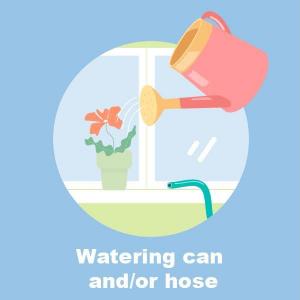
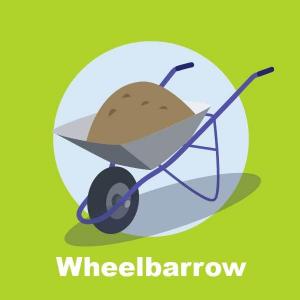
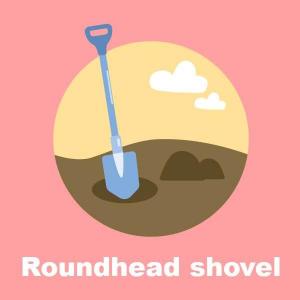
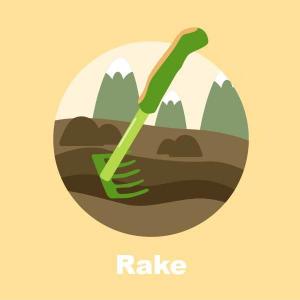


We take an interest in gardening for a variety of reasons—higher quality produce, exercise in the great outdoors etc.
When you're just getting started, gardening can be intimidating.GFinger will help you learn the basics, starting with these steps.
Step 1: Gather Your Gear
Proper tools provide us more comfort and efficiency, which means less work for us!
Here's what you'll need to get started.
1 Trowel - Used for weeding and digging small holes.
2 Gardening gloves - As much as we like getting our hands dirty, we don’t like getting them that dirty. A good pair of gloves can also protect your hands from bugs and prickly plants and weeds.
3 Sun hat - For UV protection, make sure this is wide-brimmed and cinches.
4 Watering can or hose – What you need will vary depending on your garden’s water needs and proximity to your water source.
5 Wheelbarrow - For larger gardens, you'll need one to transport mulch, dirt, and compost.
6 Roundhead shovel - For digging larger holes.
7 Rake - Ideal for spreading mulch, and gathering or transporting debris that has collected around your garden and between plants.
8 Shears - Use to prune away browning leaves or snipping herbs.
9 Pitchfork - This is an essential tool if you are creating a compost heap or pile.
Continued…









6
0




